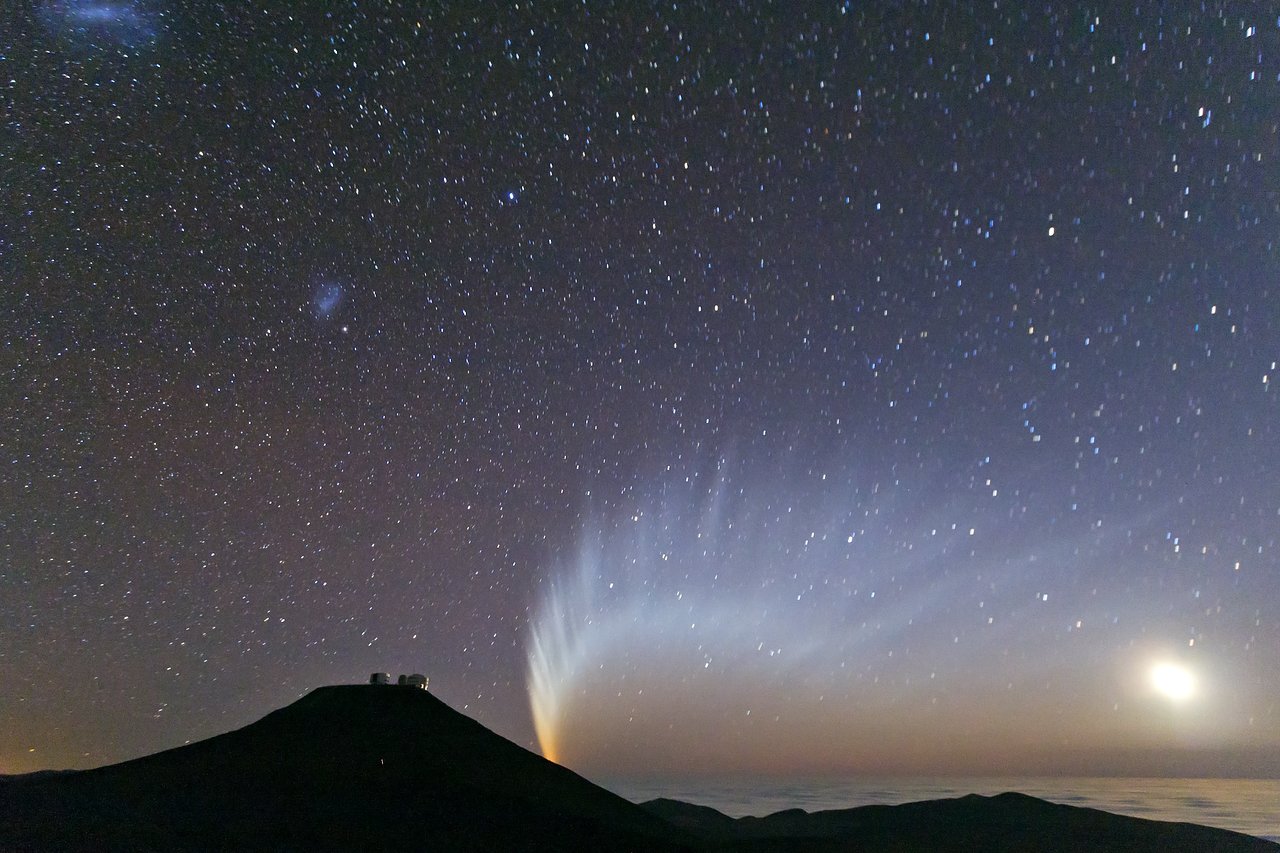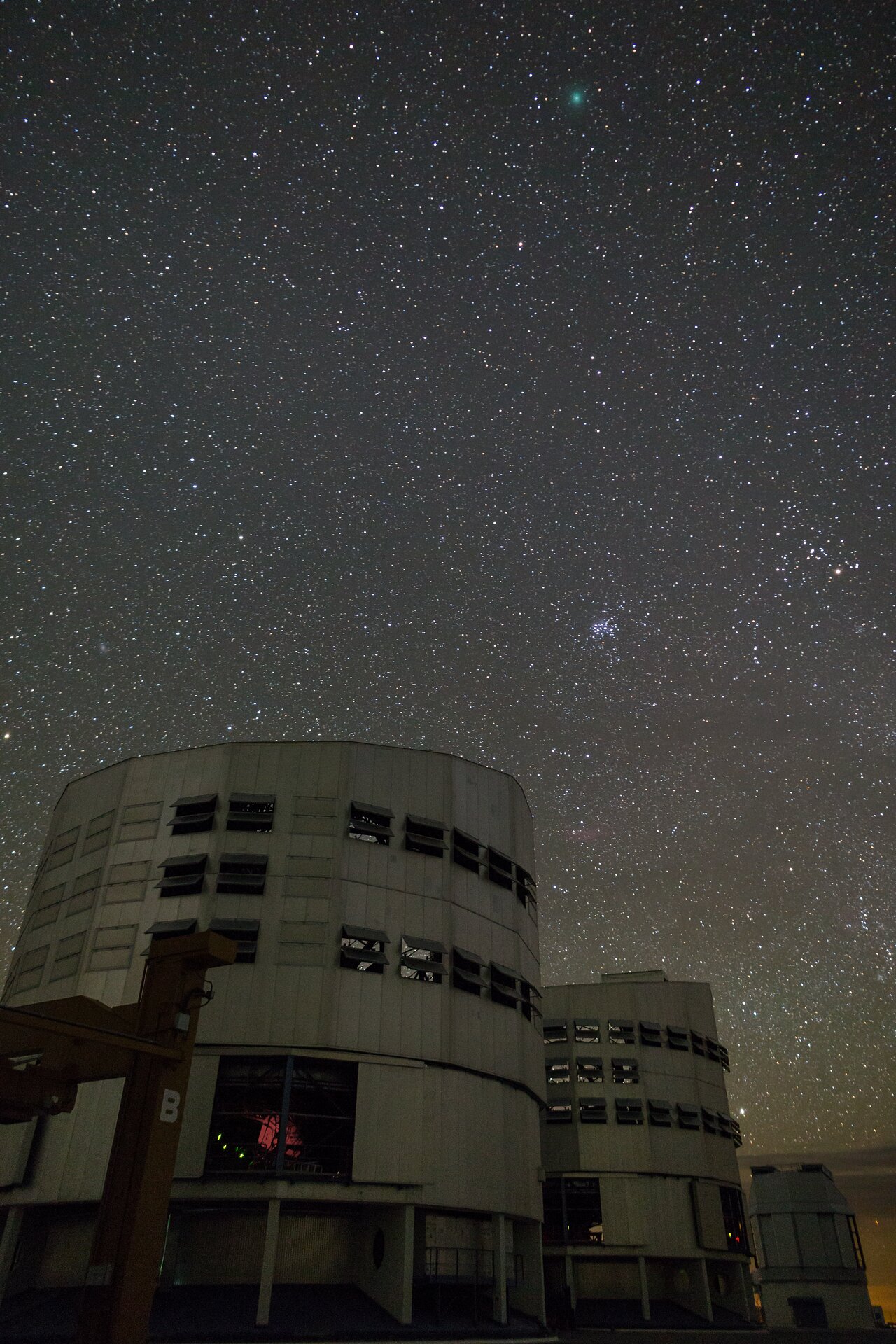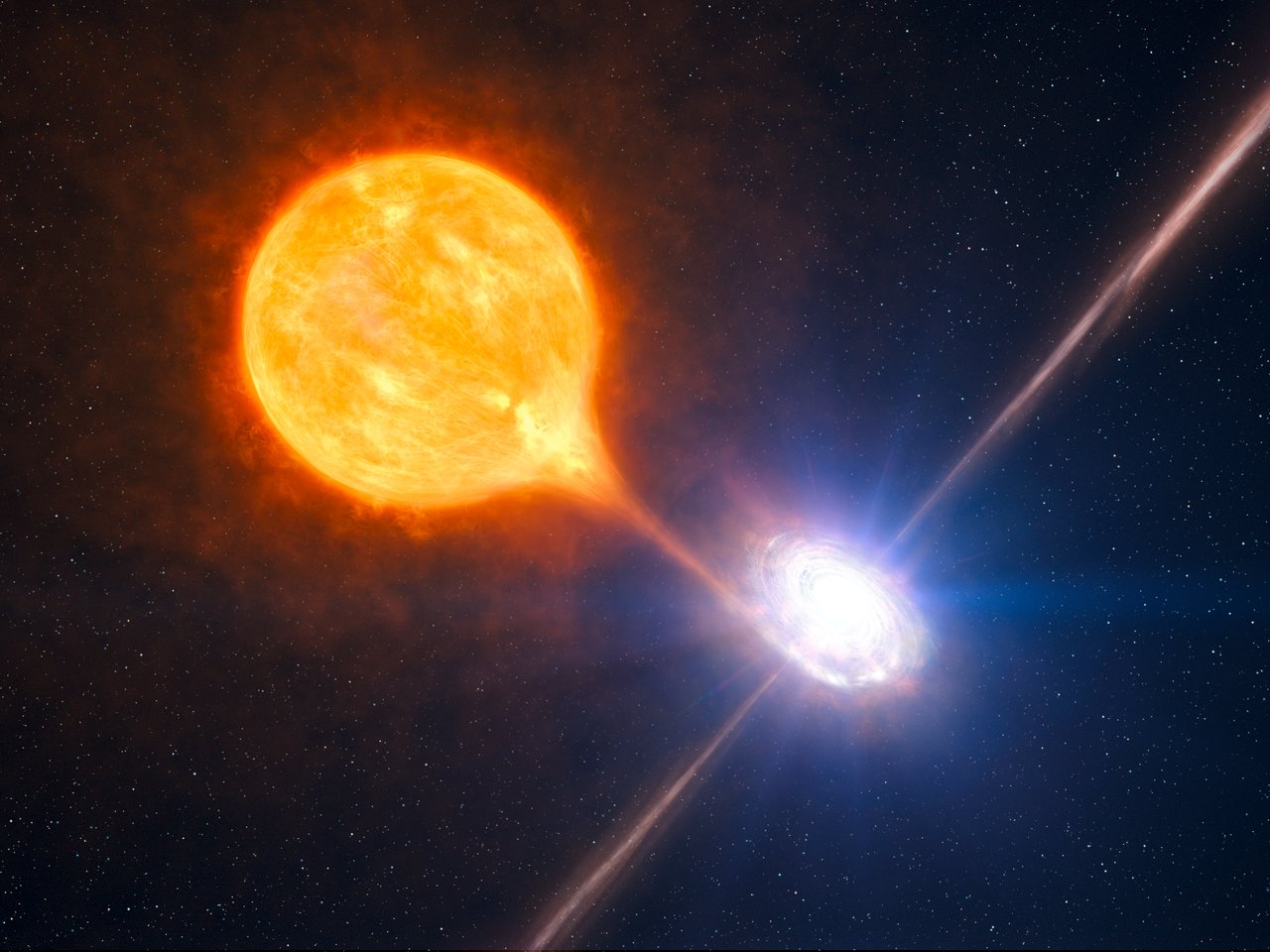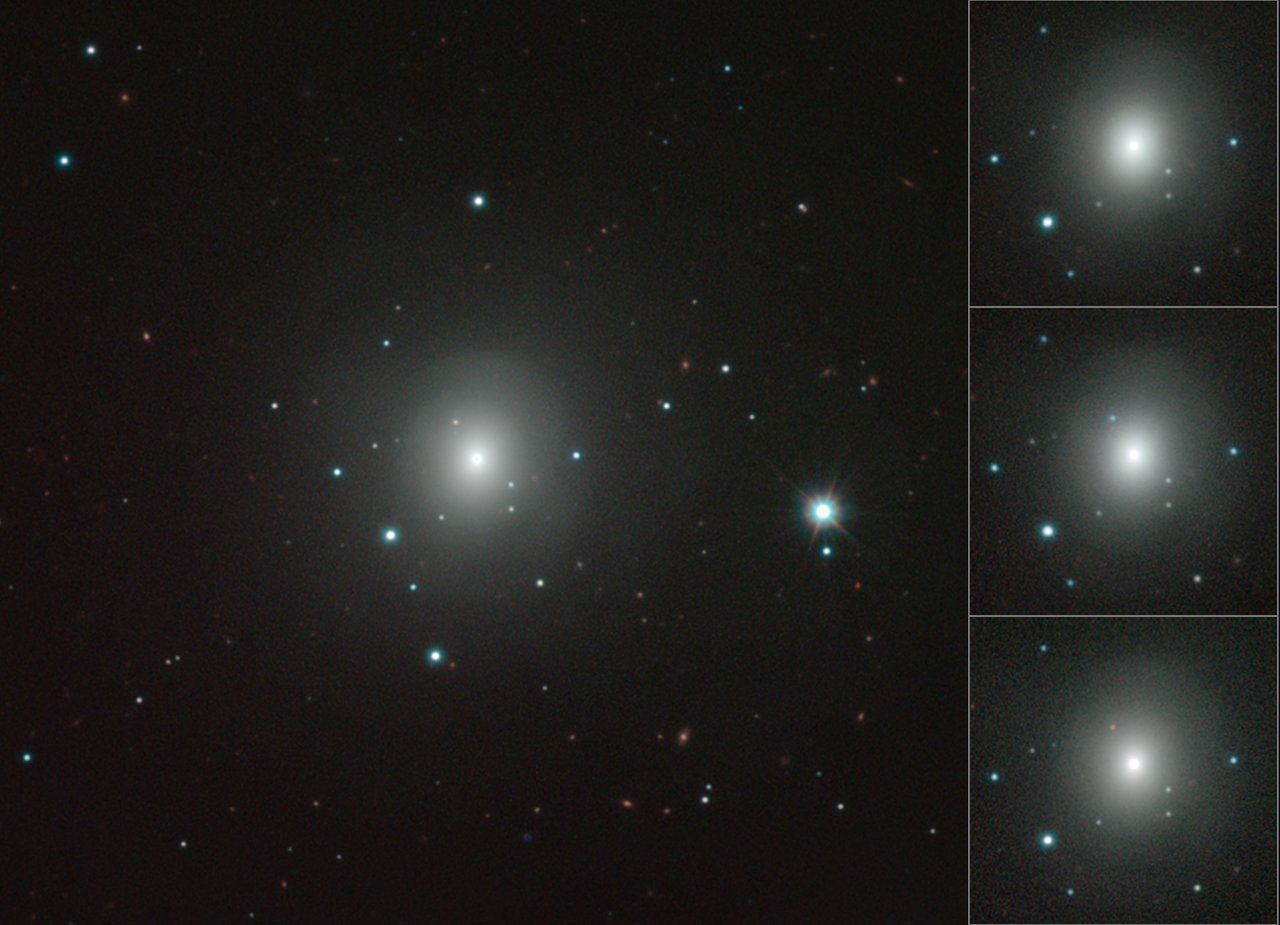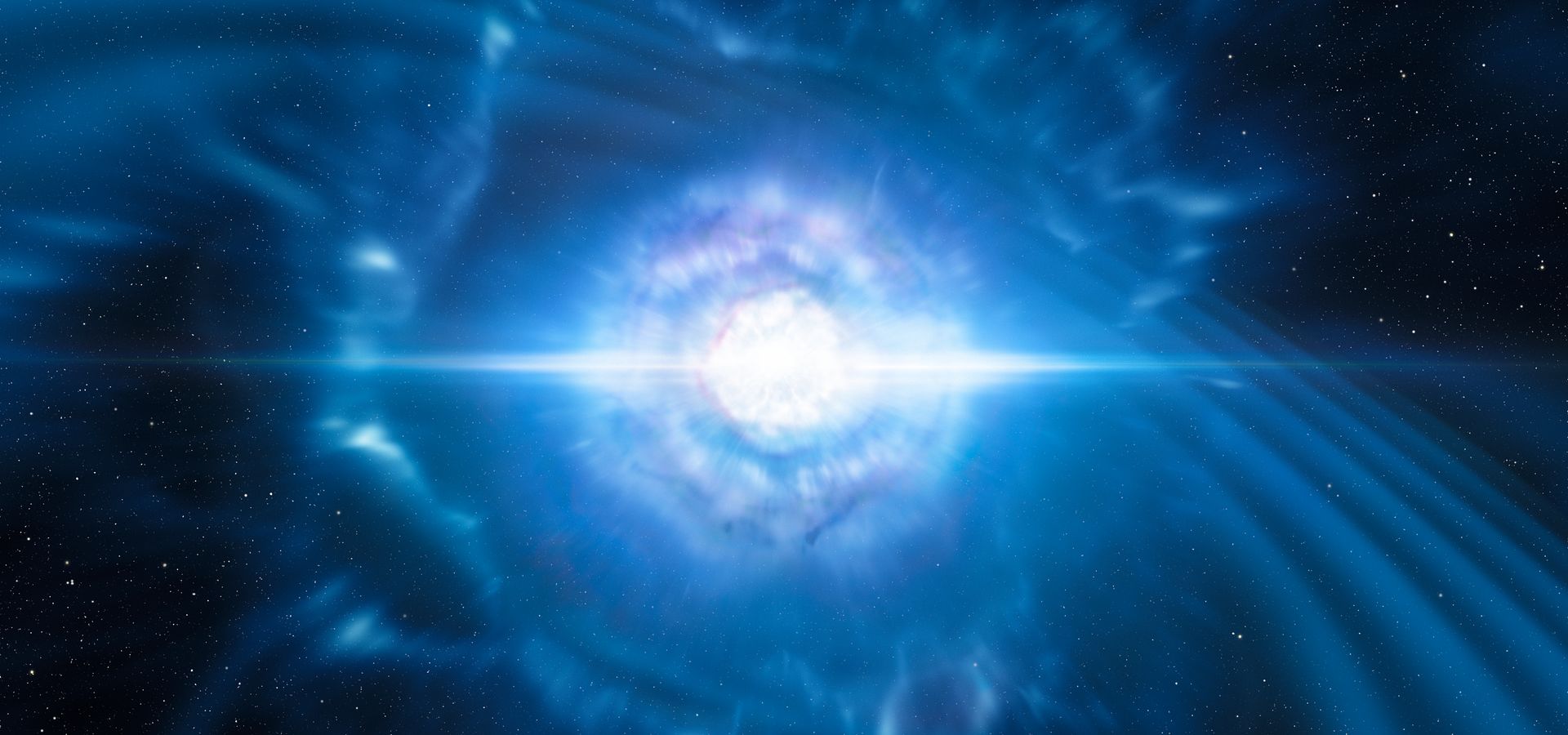
Capricious Cosmos
How do astronomers study the most unpredictable objects in the Universe?
- What are some of the most unpredictable events in the Universe
- How astronomers observe them without knowing when or where they will happen
“Comets are like cats: they have tails and they do precisely what they want.” This quote by David H. Levy, an amateur astronomer who co-discovered a comet that impacted on Jupiter in 1994, perfectly describes the capricious personality of comets –– large blocks of ice and rock that traverse the solar system. But these aren’t the only unpredictable objects out there. Violent supernova explosions, black holes gobbling material from closeby stars, or neutron stars smashing against each other are just a few examples of astronomical phenomena known for not caring about the daily routine of the astronomers who study them. How can we observe these events without even knowing when or where they will happen? Let’s find out.
Celestial wanderers
Cyrielle Opitom, a former ESO Fellow and now a Royal Astronomical Society Norman Lockyer Research Fellow at the University of Edinburgh, is very familiar with the changeable nature of comets –– fossils that allow us to study how our own solar system formed and evolved. “Comets are very unpredictable,” she says. “Some suddenly split into different fragments, crash into a planet, or become ten times brighter from one day to the next. And we are still trying to understand why those things are happening. That also makes comets very fun to study. You never know what to expect and it never gets boring.”
When a comet gets close to the Sun, its ices become gaseous. This ejects dust particles as well, creating a huge envelope of dust and gas around the nucleus of the comet, called ‘coma’. Cyrielle uses spectroscopy, a technique that splits light into its constituent colours or wavelengths, “to detect molecules in the coma, and to know what cometary ices are made of.”
But it’s hard to know in advance when a comet may undergo a sudden burst of activity. To address this, ESO and other observatories offer a type of observing programme called Target of Opportunity. “This allows us to decide in advance that we want to observe an outburst of activity, have the observations ready to be executed, and when an event is detected we can ask for the observations to be done within just a few days,” says Cyrielle.
A Target of Opportunity still requires astronomers to submit an observing proposal months in advance describing their scientific idea, even if they don’t know when they will trigger the observations. “But there are events that we can’t predict, or new interesting comets that are discovered after the deadline for observing time proposals has passed.” For situations like these, observatories offer the opportunity to obtain observing slots using Director’s Discretionary Time (DDT), which allows astronomers to submit an observing proposal on-the-fly for urgent scientific reasons. For instance, these DDT slots came in handy to observe 2I/Borisov, the first interstellar comet, immediately after its discovery, allowing astronomers to study this alien visitor while it was still close to the Earth.
Comets can still surprise you even when you are already pointing a telescope at them, as Cyrielle knows all too well. In December 2018 she was observing comet 46P/Wirtanen with the ESPRESSO spectrograph at the UT3 telescope [1], part of ESO’s Very Large Telescope. “The comet was bright and very close to the Earth,” she says, “so it was quite big in the sky. However, when we tried to point the instrument at the comet, we could not find it.”
As it turns out, the comet was too far from its predicted position. Luckily, she was observing it simultaneously with the UVES spectrograph on the UT2 telescope. “We managed to find it with UVES, which has a larger field of view. We computed the offset from the predicted position and finally found the comet with ESPRESSO as well. But our problems were not over: the comet was not moving the way we expected, so we had to constantly adjust the position of the telescope during the observations. Thanks to the great skills of our support astronomer we got amazing data in the end.”
When black holes take a midnight snack
Black holes may not be as evasive as comets, but they are still tricky to observe. Teo Muñoz-Darias, a Ramón y Cajal Fellow at the Instituto de Astrofísica de Canarias in Spain, is trying to understand what makes black holes hungry. “I study systems called X-ray binaries,” he says, “where a normal star orbits a black hole at such close distance that the black hole steals material from the star.” But since both are rotating around each other, the material doesn’t fall directly into the black hole; instead, it forms an accretion disc around it. “Gas in the accretion disc gets really hot, up to ten million degrees, thus emitting highly energetic radiation like X-rays.”
This doesn’t happen all the time though. “Most black holes are sleeping and they wake up every now and then,” Teo explains.“If there is little gas in the disc, it will just stay there orbiting the black hole. But when enough gas accumulates, it becomes hotter and friction increases; the gas then loses energy and spirals towards the black hole.” Not all the gas suffers that demise, though; sometimes it can leave the system via powerful winds and jets.
When one of these systems becomes active, dedicated space telescopes will pick up the sudden burst of X-rays. Astronomers worldwide are notified about this and start collecting additional data from ground-based telescopes, quickly sharing their findings via The Astronomer’s Telegram. Teo constantly keeps an eye on this, as interesting targets can show up anytime. “Black holes don't care about Saturdays, Sundays, or holidays,” he jokes. “In fact they tend to pick holidays!”
Upon finding a suitable target, Teo triggers Target of Opportunity observations with various instruments, like the X-shooter spectrograph at ESO’s VLT. “X-shooter is probably the best instrument worldwide for this kind of science,” he says. “With it you are able to get a spectrum all the way from the ultraviolet to the near infrared in one go, and this is fantastic. It's not only that you get a lot of data, but you get it simultaneously.” This is key with rapidly changing objects, as it allows astronomers to follow how they evolve at different colours without having to coordinate observations with separate instruments.
Thanks to observations like these, Teo and his team could study in great detail the complex balance between gas accretion onto the black hole and gas being expelled outwards due to winds. They found that winds are present even when the system is asleep, and that when they are awake their activity can end prematurely when a lot of gas is removed.
The most energetic explosions in the Universe
When it comes to unpredictability, nothing beats gamma-ray bursts (GRBs) –– sudden flashes of high-energy gamma radiation. “GRBs are the brightest things known to science,” says Nial Tanvir, a professor at the University of Leicester in the UK. “Some are produced when a massive star implodes at the end of its lifetime, leaving behind a neutron star or a black hole. Other GRBs are caused by the merger of two neutron stars. GRBs give us access to the most extreme physics that we know of in the Universe.”
As opposed to comets and black holes feasting off closeby stars, which require astronomers to react within days, GRBs sometimes need to be observed minutes after they occur. “GRBs start out bright and decline in luminosity quickly,” Nial says. “So if you can get there early, there's just so much more information that you can get with a shorter amount of telescope time. If you can get observations within minutes and then continue to monitor over a few hours, in some cases you see variability, which can tell you important things about the GRB and its environment.”
To allow astronomers to react so quickly, ESO offers them a unique observing mechanism called Rapid Response Mode. When this mode is triggered, an alarm instantly goes off in the Paranal control room: the ongoing observations will be aborted –– if it’s safe to do so –– and the telescope will automatically slew towards the sky coordinates of the GRB. Unfortunately, this requires knowing the exact location of the GRB from the get go, which isn’t always the case.
One of the most exciting events that Nial has studied was the first-ever detection of light from two merging neutron stars. On 17 August 2017 the LIGO and Virgo interferometers registered gravitational waves –– ripples in space-time –– passing through Earth. Two seconds later, the Fermi and INTEGRAL space telescopes detected a GRB coming from the same area of the sky. Both were the smoking-gun evidence of a kilonova: two neutron stars smashing against each other.
As night fell in Chile, dozens of telescopes started to chase this unique event. “Neither the gravitational waves nor the gamma rays gave us a tremendously accurate localisation,” says Nial. So this was like looking for a needle in a haystack, scanning a large patch of the sky looking for a small dot that wasn’t there before. The Swope telescope at Las Campanas Observatory was the first one to locate the host galaxy: NGC4993, an elliptical galaxy about 140 million lightyears away. Five other teams found it independently during those hectic first couple of hours, including Nial’s group using ESO’s VISTA telescope.
“You just did have that strong sense that you were sort of living through history, perhaps more so than anything else I've been involved with.” During the next few weeks, astronomers worldwide monitored the evolution of this object with pretty much every telescope they could, including 14 instruments from 7 ESO-related telescopes. “As the days went by this thing started to become redder and redder, just as predicted. The collision pulled very radioactive material out of the neutron stars, which then decayed to form a whole lot of elements heavier than iron like gold, platinum and uranium, whose origin had previously been quite mysterious.”
It’s all about teamwork
Observing these unpredictable events is only possible thanks to team spirit. In the case of the kilonova, for instance, astronomers barely had a couple of hours after sunset to observe it before it sank under the horizon. As Nial says, “The success of all of these campaigns really came down to the staff at the telescopes, who were doing their very best to squeeze in those observations in difficult circumstances.”
But this is only part of the story, as good planning is also key. “ESO is not just Paranal or La Silla observatories,” explains Cyrielle. “It also has an amazing team at the User Support Department to help us prepare and adjust our observations, so that we make the best possible use of the instruments. When I was preparing observations of the interstellar comet 2I/Borisov, they helped me design unusual observations that spanned several months. Without them we could never have obtained such high-quality data to study an interstellar comet.”
Note
[1] Unlike other instruments, ESPRESSO isn’t physically attached to a Unit Telescope. The light from any UT, even all four of them, can be fed into the instrument.
Biography Juan Carlos Muñoz Mateos
Juan Carlos Muñoz Mateos is Media Officer at ESO in Garching and editor of the ESO blog. He completed his PhD in astrophysics at Complutense University in Madrid (Spain). Previously he worked for several years at ESO in Chile, combining his research on galaxy evolution with duties at Paranal Observatory.

